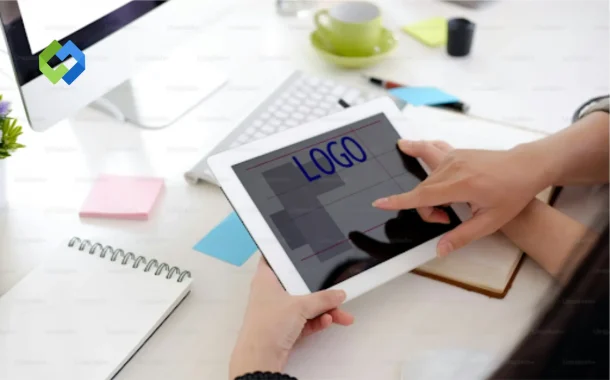In fact, research by Tailor Brand states that it takes only about 10 seconds for someone to form an opinion about a logo, and that opinion can directly influence whether they decide to trust and engage with the brand.
A weak or overly complicated design can hold a startup back before it even gains momentum, while a strong one can build recognition and credibility from day one.
We all know that startups face unique challenges compared to established companies. They do not have years of reputation to lean on, so their logo has to work harder to capture attention and communicate values.
This is why you need some surefire strategies to help you create a logo that stands out and does its job.
Table of Contents
Table of Contents
How To Create the Right Startup Logo
The following tips can help you in creating a logo that looks good and also carries meaning.
1. Start With Discovery Before Design
A successful logo does not begin with a sketch or a clever font; rather, it kicks off with discovery. This stage is about slowing down and asking the right questions before rushing into shapes and colors. What does your business truly stand for? Who are you trying to reach? How do your competitors present themselves, and what space does that leave for you?
This early work gives you the clarity and direction you need to proceed. It may involve talking to stakeholders, gathering outside perspectives, or digging into industry research to uncover what your brand personality should feel like. The best bet is to partner with a reliable custom logo design company to clearly understand your vision and translate it into a clear, impactful, and lasting brand mark.
2. Analyze your Competitors’ Logos
A logo cannot exist in a vacuum, which is why it must shine amid competitors in your industry. This process will start once you closely examine the visual identities of brands you compete with: note their patterns, color choices, and tone.
Are most playing it safe with muted blue? Leaning into minimalism? Once you see what is common, you can design something that is fresh but still relevant to your audience’s expectations.
Pro Tip: Look at established brands to understand what worked and why. Then observe newer disruptors and how they use a distinct design to make themselves memorable.
Research by EMB Global shows that a consistent visual identity, such as logos and color schemes included, can boost brand recognition by up to 80%. Perhaps that is just what your business needs to be visible and easily distinguishable in a sea of lookalikes.
3. Refine Your Logo
Once you have a handful of promising ideas, the real work begins, which includes shaping those rough sketches into something polished. This stage is all about tightening proportions, cleaning up lines, and making sure the logo holds up in every possible scenario.
Can it shrink down for a business card without losing clarity? Does it still feel powerful in black and white? More importantly, does it stay true to the values your brand stands for?
This is also the time to let others in. Share your top contenders with colleagues, mentors, or even a few trusted customers. Pay attention not only to what they say, but also to their first reactions.
If a design feels instantly recognizable and sticks with them, you are on the right track. Refinement is where a logo evolves from a clever sketch to a lasting symbol.
4. Be Wary of SMART Elements
There is no denying that a strong logo captures what your business stands for and communicates your values clearly. The S.M.A.R.T. framework, Simplicity, Memorability, Appropriateness, Resizability, and Timelessness, offers a useful way to evaluate what makes a logo successful.
● Simplicity
The strongest logos are often the simplest. Clean lines and minimal details make a design easy to recognize across different contexts. Think of Nike’s swoosh or Apple’s bitten apple, both of which are stripped down to the essentials yet instantly identifiable.
● Memorability
A logo should stick in people’s minds after just one glance. Research shows that simple logos are 13% more likely to be remembered by consumers. That single fact highlights the value of clarity over complexity.
A design that is unique but not overcomplicated makes your brand easier to recall in a crowded marketplace.
● Appropriateness (Brand-Aligned)
Logos work best when they reflect the personality and values of a brand. If your business focuses on innovation, tradition, playfulness, or luxury, your design should echo that identity so customers can feel it right away.
A mismatch between logo style and brand voice risks confusing your audience.
● Resizability (Versatility)
Your logo should look just as strong on a small mobile screen as it does on a giant billboard. Resizability ensures consistency across every platform, like social media, websites, packaging, and print materials, so your brand identity remains intact no matter where it appears.
● Timelessness
Trends come and go quickly, but a timeless design ensures your logo will stay relevant for years. Brands like Coca-Cola and IBM have relied on consistent designs for decades and proved that durability often comes from avoiding unnecessary complexity and focusing on core brand identity.
5. Add Final Touches to Bring Your Logo to Life
After you have fine-tuned your design and sifted through feedback, the final step is about locking everything into place. This is where you settle on the exact color palette, the typography that feels right, and those small but important details that bring harmony to the design.
The aim here is to ensure consistency. Your logo should look just as strong on a tiny app icon as it does on a billboard. It should sit comfortably on your website, flow seamlessly across social media, and still hold its impact when printed on something as small as a business card. At this stage, you are giving your brand a face that can stand confidently in every space it shows up.
Final Word
Designing a startup logo is not just about putting together shapes and colors. In fact, it is about creating a symbol that tells your story, resonates with your audience, and grows with your business.
Keep in mind that the best logos balance simplicity with meaning, memorability with timelessness, and creativity with clarity. By following the S.M.A.R.T. principles and taking the time to research, refine, and finalize your design thoughtfully, you can create a logo that does more than look appealing. It becomes the foundation of your brand identity.
A logo that works is one that feels authentic and can instantly connect people to your brand. For startups, especially, where first impressions matter so much, investing the effort to get it right pays off in recognition, trust, and long-term growth.














